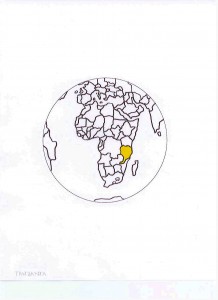TANZANIA
A. THE COUNTRY
The Republic of Tanzania is a country in central East Africa comprising
mainland Tanganyika and the offshore islands of Zanzibar and Pemba.
Government is a multiparty democracy and the country has remained stable
amid many troubled nations. Zanzibar has continued to be a troubled
region, both internally and in its links to the mainland. Tanzania is
one of the world’s poorest nations where agricultural subsistence
economy dominates. Due to its stability and dedicated leaders, it
continues to attract aid and investment. There is great potential
through mineral deposits and a huge tourist industry.
B. THE PEOPLE
Rapid urbanization and endemic corruption intensifies the systemic
poverty. 45% of the population are under 15 years. AIDS has afflicted
8.8% of the population. The population is ~46,000,000 and official
languages Swahili and English. There are more than 150 indigenous ethnic
groups. Widespread use of Swahili has obscured some tribal divisions.
~86.3% are Bantu peoples, ~7.8% Swahili, ~2.2% Nilotic, ~1.7% Cushitic,
~0.3% Khoisan, ~1.7% Other (South Asian, Arab, Chinese).
C. RELIGIONS AND CHRISTIANITY/PENTECOSTALISM
Religious harmony is remarkably high given the size and activism of
Christian and Muslim communities. Witchcraft is widespread and
permeates both of these faith groups. ~54.07% claim to be Christian,
~31.2% Muslim, ~12.97% Ethnoreligionist, ~0.9% Hindu, ~0.43% Baha’i,
~0.4% Non-religious, ~0.03% Sikh.
In the Christian category:
~27.1% are Catholic, ~17.43% Protestant, ~7.33% Anglican, ~4.2%
Unaffiliated, ~2.22% Independent, ~0.06% Orthodox.
Evangelicals represent ~17.9% of the population.
Charismatics represent ~11.5% and of those ~4.3% are Pentecostals.
Donna Siemens
References:
http://en.wikipedia.org
Operation World, Jason Mandryk. Colorado Springs: Biblica Publishing, 2010.

